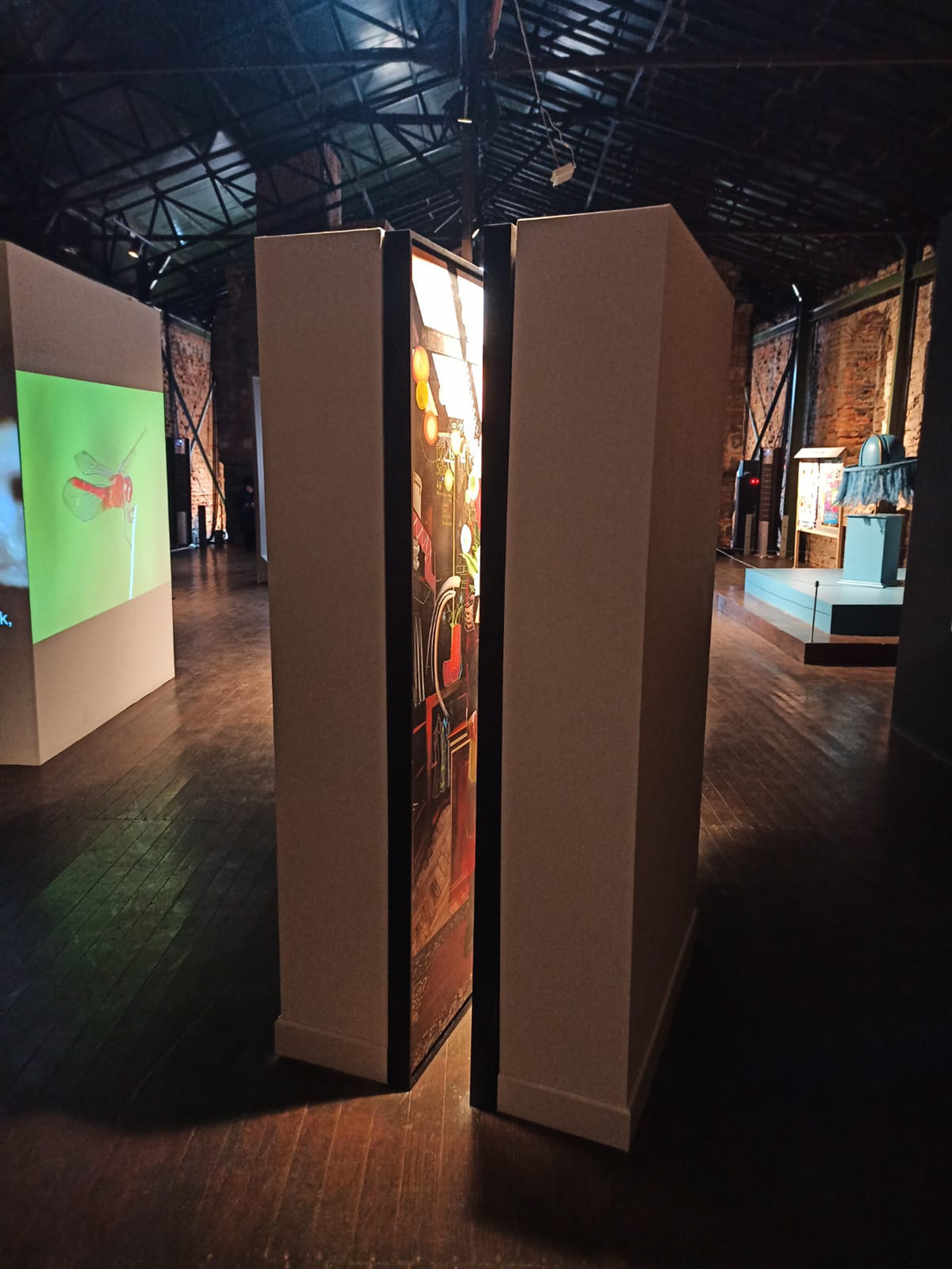"Narrow Angle" can be viewed as a poignant metaphor for contemporary human struggles and philosophical concerns. In an increasingly connected and globalized world, individuals often find themselves navigating complex and restrictive social, political, and cultural landscapes that can limit personal expression and creative freedom. The installation's arrangement, with its intentionally constrained access to the paintings, echoes the challenges many people face in seeking to make their voices heard in the face of censorship, surveillance, and systemic suppression.
From a philosophical standpoint, "Narrow Angle" invites reflection on the nature of perception and the role of the observer in determining meaning. The artwork's limited visibility serves as a reminder of the subjective nature of reality, as each viewer's experience of the paintings will be inherently incomplete and fragmented. This notion resonates with the existentialist idea that individuals must construct their own meaning and purpose in an inherently ambiguous world.
Additionally, the installation's exploration of space and boundaries connects with broader philosophical discussions on the limits of human knowledge and understanding. The space between the walls, though seemingly insignificant, becomes a powerful barrier that prevents viewers from fully engaging with the art. This can be seen as an allegory for the limits of human comprehension, and the enduring mystery that surrounds our existence.
In summary, "Narrow Angle" offers a thought-provoking examination of contemporary human struggles and philosophical concerns, weaving together themes of perception, creative resilience, and the limits of understanding. Through its innovative arrangement and bold artistic statement, the piece challenges viewers to confront their own experiences of constraint and suppression, and to consider the enduring power of human creativity in the face of adversity.


